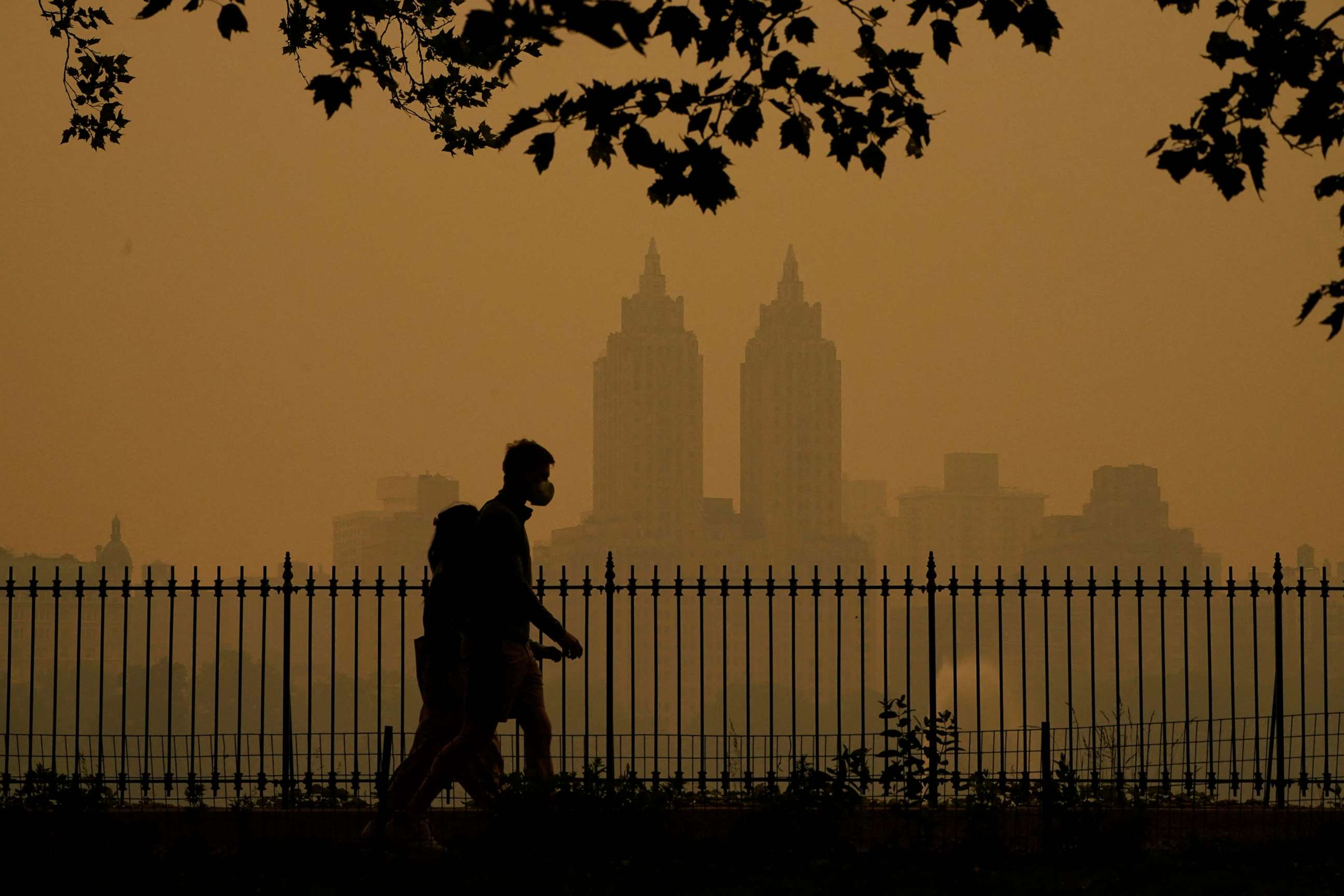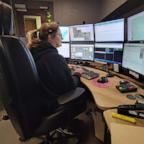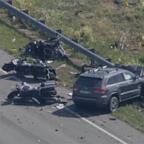Latest forecast
The large plume of hazardous wildfire smoke that moved through New York City on Wednesday drifted into the Mid-Atlantic Thursday, bringing dangerous air conditions to Philadelphia, Baltimore, and Washington, D.C.
By Thursday night, the thickest smoke will continue to spread over the Mid-Atlantic. AQI values may reach 400 in some areas. (Levels under 100 are generally considered safe.)
By Friday morning, the hazardous haze will be covering Pittsburgh and the Chesapeake Bay.

The smoke may thin out during the day on Friday with cities like New York City seeing clearer conditions by Friday evening.

Major relief will move in by Monday when a cold front sweeps across the East, washing away much of the smoke in the air.
-ABC News' Daniel Amarante





